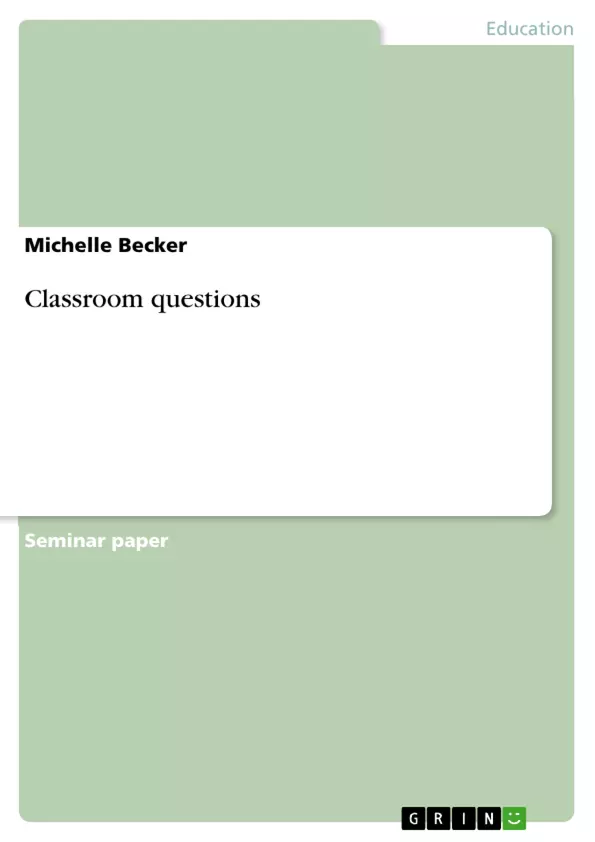„Let us...make the study of the art of question-asking one of the central disciplines in language education“(Postman 1979: 140).
In order to show how the importance of questions as part of classroom interaction, I try to evolve a scheme to present numerous types of questions and how they are being used by teacher and student. Depending on the didactic intention there are quite a number of different ways to classify a question. In order to give a general overview I decided to divide my classification into three main parts.
First I am going to give an explanation of the three different types of categorising questions and display what the respective central key points are. Then I explain the difference of questions being asked by the teacher or the student and how they are being used during class. The third section is a practical analysis of questions with the help of the data description followed by a short evaluation displaying whether my framework is useful in analysing the data or if the need of further specification is required. And finally I am going to give a brief summary and try to come to a conclusion.
Inhaltsverzeichnis (Table of Contents)
- 1 Introduction
- 2 Typology of classroom questions
- 2.1 Display and referential questions
- 2.2 Open and closed questions
- 2.3 Other terms of questions
- 3 Data
- 3.1 Data description
- 3.2 Data analysis
- 4 Discussion
Zielsetzung und Themenschwerpunkte (Objectives and Key Themes)
This paper aims to explore the importance of questions in classroom interaction by analyzing different types of questions used by teachers and students. The author proposes a classification scheme to categorize questions based on their didactic intention and examines how these question types are utilized in practice.
- Typology of classroom questions
- Analysis of questions based on their function and purpose
- Role of questions in promoting student engagement and interaction
- Practical application of the classification scheme in real classroom settings
- Evaluation of the framework's effectiveness in analyzing classroom data
Zusammenfassung der Kapitel (Chapter Summaries)
- Chapter 1: Introduction This chapter introduces the importance of questions in classroom interaction and the need for a comprehensive typology of question types. It outlines the structure of the paper, which involves a classification of questions, an analysis of their use in practice, and an evaluation of the proposed framework.
- Chapter 2: Typology of classroom questions This chapter explores different ways to classify questions based on their function and purpose. It examines the distinction between display and referential questions, open and closed questions, and other categories of questions, such as meta-cognitive, procedural, and content questions. It discusses how different question types contribute to different learning outcomes and classroom dynamics.
- Chapter 3: Data This chapter presents the data used for the analysis, providing a description of the data source and its characteristics. It outlines the methods employed for analyzing the data, including the application of the classification scheme proposed in Chapter 2.
Schlüsselwörter (Keywords)
This study focuses on the analysis of classroom questions, specifically examining their typology, function, and application in real-world settings. Key terms include display questions, referential questions, open questions, closed questions, meta-cognitive questions, procedural questions, content questions, and the role of questions in fostering student engagement and interaction.
- Arbeit zitieren
- Michelle Becker (Autor:in), 2009, Classroom questions, München, GRIN Verlag, https://www.grin.com/document/166424



